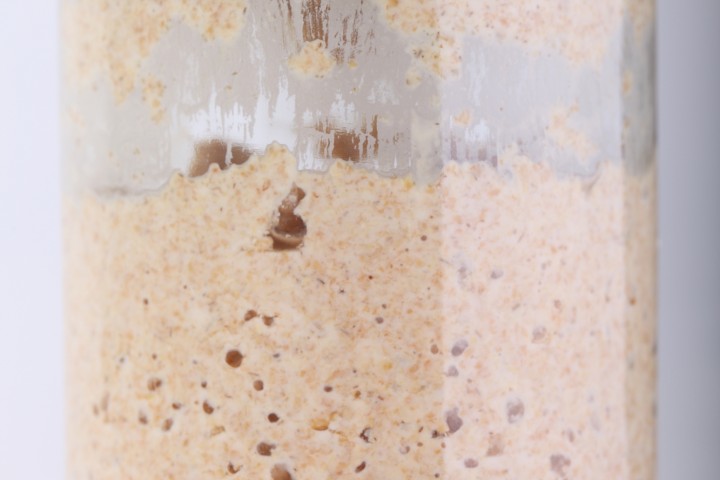
Our trusty, fruity rye sourdough starter culture
Klik hier voor de Nederlandse versie
A lot has been written about sourdough starter cultures. You can find long and elaborate articles on how to make your own starter while using things like pineapple and grapes. They are almost mythical creatures to be treated with the utmost care and fed every evening at the same time while standing on your head. The truth is much simpler. My rye starter seems almost indestructible. And the only thing I did is mix some whole grain rye flour with water and wait…
What is a starter?
A starter is a piece of dough which contains wild yeast and bacteria which you use to make your bread. The wild yeast produce carbon dioxide (and a bit of alcohol too) to make your bread airy. It is the bacteria that can give your bread the sour taste, this is because the bacteria transform the starch of the flour into lactic acid, acetic acid and alcohol. Both the acid and the alcohol give sourdough bread their unique and interesting taste. You add an amount of your starter to a larger amount of flour and water mixture like you normally use commercial yeast to a poolish or a biga preferment. It works just the same only slower. Commercial yeasts are selected and bred for speed by the big yeast companies but wild yeast works at a slower pace. This is why bread recipes for sourdough bread tend to take much longer and consist of more steps.
Why a rye starter culture?
For my sourdough baking I use a culture which is made with 100% whole rye flour. A sourdough culture based on rye flour is easier to maintain, it does not go into a slurry like a wheat flour starter when you forget about it, it is easier to stir because it has almost no gluten and it smells very very nice, a bit like fruit. It is also very forgiving in the amount you feed it. You feed your culture after baking to replenish your stock. Normally I only feed it once a week, after my weekend baking, I just give it a few table spoons of water and rye flour, stir and ready!
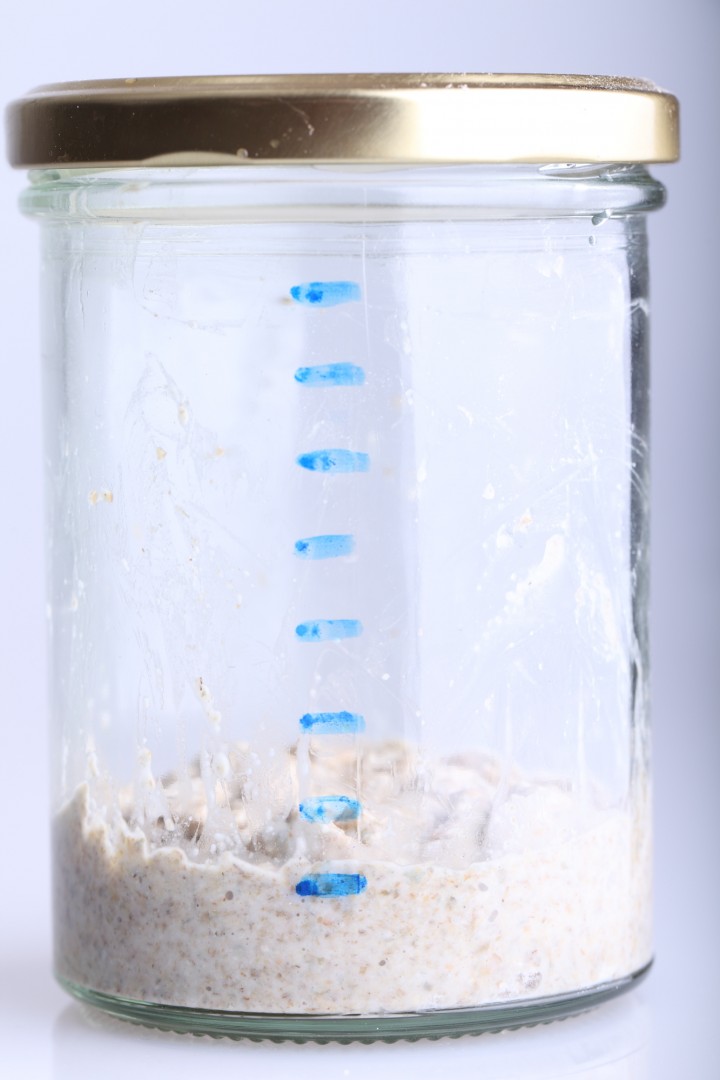
The birth of a new starter culture
Before starting your own culture
First thing: work clean! Use a clean jar and always use clean spoons to stir and add flour to the mixture. The organisms living on your hands can contaminate your starter and spoil it! Throw away your starter and start over when it develops an awful smell or grows moldy in whichever color, it probably has picked up a bad bacteria in the first feeble stages of the starters life.
After some research I found that the most likely truth of the source of the yeast and bacteria is the flour itself. The yeast and bacteria live on the outside of the grain (just like the yeast to make wine lives on the skin of the grapes). This is why you need (preferably organic) whole grain rye flour, because you need the outside bran of the grain as a source of yeast and bacteria.
I start with a relative wet starter and when the starter is alive add more flour to maintain a more stiff starter. I start with a small amount of water and flour as not to waste too much flour, because you have to throw halve of the starter away with each refresh. When your starter is alive and kicking you always can scale up the size of your starter simply by adding more water and rye flour.
Be sure to use water which does not contain chlorine. Water companies sometimes add a little chlorine to your tap water to kill all bacteria and probably also the yeast in the water, so it is not a good idea to use this for building a sourdough starter. If in doubt you can use bottled water.
And now on with the easy steps!
Day 1: Take a small clean jar (I use a 400ml jam jar) and add 40ml of water and 40g of whole grain rye flour, stir with a clean spoon for 30 seconds. Draw a line to mark the height of the mixture with a permanent marker on the jar so you can see any activity easily. Loosely close the lit of the jar and store at room temperature (about 20-21 degrees Celcius) out of direct sunlight for 24 hours.
Stirring the mixture every 3 to 4 hours for 10 seconds helps distribute the flour, yeast and bacteria and aerates the mixture which helps development.
Day 2: If you are lucky you should see some little bubbles of air in the mixture. The smell of the mixture at this stage is not very nice, a bit musty but not totally off putting. Add 20ml of water and 20g of whole grain rye flour. Stir with a clean spoon for 30 seconds. Draw a new mark line if needed. Loosely close the lit of the jar and store at room temperature out of direct sunlight for 24 hours. Stirring the mixture 2 or 3 times a day for 10 seconds helps distribute the flour, yeast and bacteria and aerates the mixture which helps development.
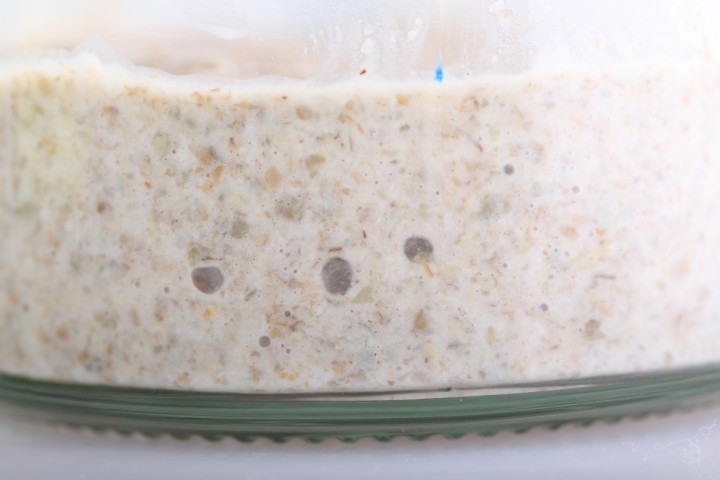
Some bubbles are visible after 24 hours – It’s alive, its alive…
Day 3: Your mixture should now be getting active. Mine did more than double in size during the last 24 hours. If your mixture is not very active yet, throw away half of the mixture and repeat the directions of day 2 again. The smell of your mixture should be a little nicer at this stage. When your mixture is active, throw away two third of the mixture and add 30ml of water and 30g of whole grain rye flour, stir with a clean spoon for 30 seconds and store at room temperature. Stir the mixture 2 or 3 times a day for 10 seconds.
This is called refreshing or feeding your starter. By throwing out part of your mixture and adding new rye flour you give the starter fresh food (the rye flour) to work on, so all your new yeast and bacteria can get ‘stronger’ and multiply again. You also dilute the alcohol and the acid they produce so the yeast and bacteria do not ‘poison’ themselves.
Day 4: Your starter should now be fully active and strong enough to double or triple in size during a 24 hours time period. We need to refresh it again before we can use this starter because the acid producing bacteria need more time to develop than the yeast. So throw away two third of the mixture and add 30ml of water and 30g of whole grain rye flour, stir with a clean spoon for 30 seconds and store at room temperature.
When your starter is not active repeat the steps of day 2 and 3 until it is getting active. Sometimes it just takes a few days longer, depending on flour, area and temperature. When at any stage your starter gets moldy, smells bad or you see colored spots on your starter which do not seem to belong there, you sadly have to start over as you probably picked up some bad guests.
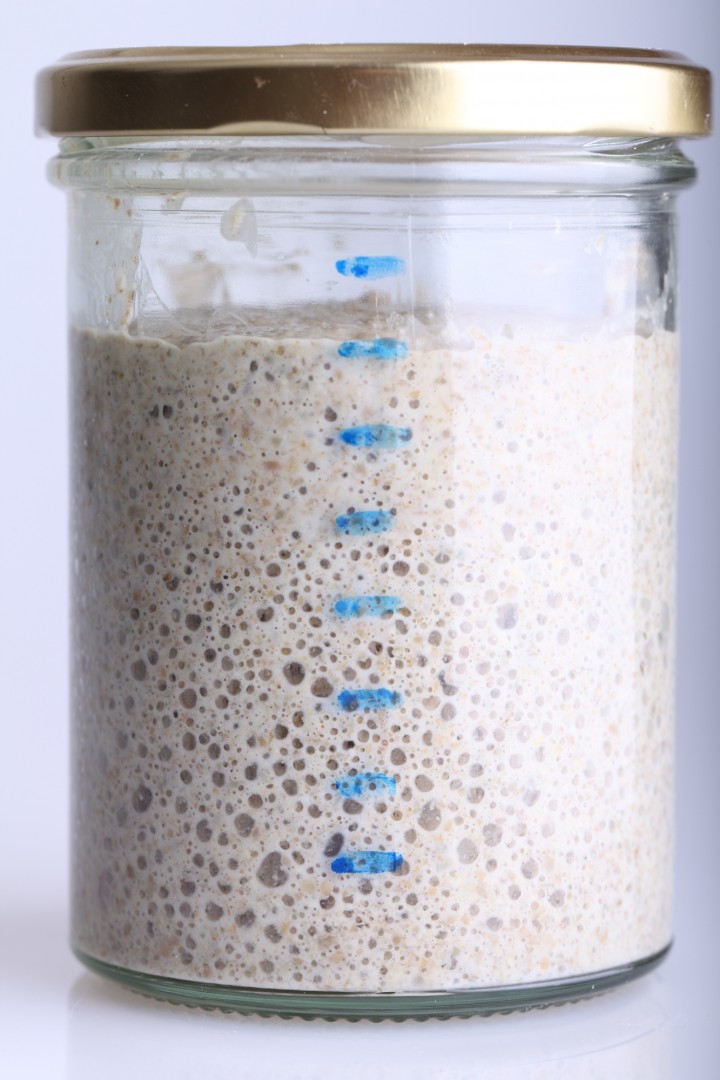
The starter is now 36 hours old and has doubled or tripled over the past 12 hours after feeding
Day 5: Your starter should at least double in size consistently after each refreshment to be ready for your first baking project. If your culture does not double in size consistently after day 4 or 5 repeat the directions of day 4 until it does.
At this stage your starter should be developing a nice fruity smell during the next few days. You can now let your starter rest for a few days. After refreshing, I keep my starter on the counter for 12 to 24 hours, look for it to double in size and develop and then store it in the fridge. Mine developed a nice fruity tone on day 6 which got even nicer on day 7. Just keep using and maintaining the starter from now on, after a while the color of your starter should get a little bit more beige after it has doubled or tripled after a feeding (notice the difference in color of my old and new starter). This is a sign of maturation of the starter and the production of acid.
How to maintain your starter
A rye starter does not need much maintenance. We store our starter in the fridge. We bake (almost) every weekend so our starter is being refreshed at least each week. We keep about 120g of starter of which we use about 60g up to 100g each week. So after taking out the amount for baking, we just add water and rye flour and stir, so we have about 120g of starter again. We keep our starter quite stiff, almost like a thick paste. The reason for this is that it will develop a lot slower with less water, so it matures during the week and is ready for baking the next weekend.
After feeding we keep the starter on the kitchen table at room temperature (usually around 21C) for about 12 hours so it can develop and double or triple in size. When it has developed, we store it in the refrigerator until the next baking session. Always wait for your starter to at least double in size before storing it in the fridge, a starter should be fully developed before it can survive in the cold. A starter kept in the fridge should at least be refreshed every two weeks. A starter kept on your counter should be refreshed at least every three days.
If we want to bake, we take it out of our fridge and use it directly for a poolish or biga. Then refresh it, so it will be ready and active for our next baking session. That’s it!
And if for any reason you are not able to get your own culture started, it is possible to ‘kickstart’ the process by buying a packet of sourdough starter. We know that Kensington Sourdough, based in Toronto Canada, are sending their dried San Fransisco Sourdough Starter all over the world since quite a few years now and at a very reasonable price. They even have an offer for worldwide free shipping sometimes. Our baking friend Ben, the owner is very knowledgeable about all things sourdough and has some good info on the subject too.
Best of luck to all sourdough bakers and whether you make your own from scratch or you kickstart the process with a bought culture, enjoy the process!
Small video clip timelaps of rise of rye sourdough starter
More sourdough tips to help you bake that perfect sourdough loaf! Plus some recipe suggestions.





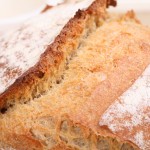

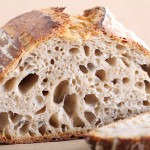
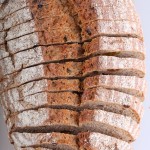
Viktoria G says
Hi, just wanted to post my experience since i had trouble with getting good active starter. Maybe this can help someone who might have the same problem. After many tries I just couldn’t figure out why my starter is smelling good, making bubbles but it barely if not at all doubles in size. It went ok to bake on it but still I looked for a reason…. It wasn’t water or temperature that was a problem for sure. Then I made a research and experiment and found out that problem was that I used flour that way too much whole grain … What works best for starter is medium whole grain. That was also a reason why I had to use almost double as much water before for my starter, cause as it was completely whole grain it absorbed more water and probably was too heavy in its consistency to lift itself up while maturing. When switched to a bit less whole grain flour all went just fine. Hope this helps someone who has trouble with making a starter.
Weekend Bakers says
Thanks for sharing your experience and this tip Viktoria! You are very right, every flour can be and act differently and your solution we are sure will help other bakers too.
Happy baking,
Ed & Marieke
Lorraine says
Hello there! I started my sourdough starter last monday (using method above, and organic rye flour). Was going great guns until I day the steps for day 3 (removed 2/3, refreshed with 30g water/flour), but it hasn’t moved since then (so almost 3 full days). It grew a pale, very firm skin over the top with a sour smell, but once the skin was removed, I could see lots of bubbles in the remaining mixture. So I removed the skin and fed it again. Is it too far gone?
Also, I am wondering if the temperature here is contributing to it not developing? Some days the temps go as high as 36deg, could this be killing my starter?
Thanks,
Lorraine
Weekend Bakers says
Hi Lorraine,
I wonder how it was the skin formed. Did you cover the jar as mentioned? The bubbles look promising and if the smell is not off putting we would suggest you continue with the process because it should be fine. The temperature is a challenge…try to find the coolest spot in the house because maybe the skin has formed because the moisture has evaporated. With these temperatures you should try and adapt and find a good refreshing pattern that is probably more often.
Good luck with it!
Marieke & Ed
Marianne Kovacs says
what a great, simple explanation and set of instructions! I like that you start off with much less than some other video turorials recommend. Less waste. the only thing I question or find confusing here is that you say you keep a thicker starter, which sounds much easier to handle for sure. But you instructions appear to be 50/50 water to flour feedings which sounds like what they call 100% hydration. Is it because you are using rye flour that it ends up thicker, or do you just cut back on the water for the feedings once you have the starter actively providing you with what you need for baking?
I’ve bookmarked your site. Like I say, I love your simple approach and explanation. Good for beginners like me. Right now all I want is a successful starter and a good loaf of bread. Once I get that, I’ll delve into the scientific explanations. Marianne
Weekend Bakers says
Hello Marianne,
Thank you very much! And yes, you are right. To explain what we mean: The instructions are for a standard, medium thickness and this is a good starting point. After that, you can decide for yourself how exactly you want your starter to be, a bit thicker or a bit sloppier, depending on your personal preferences and needs and the flour you use. With personal preferences we also mean the sourness you are aiming for. In general a thicker paste also means more sour. See our tips on sourdough baking for more on this subject: www.weekendbakery.com/posts…ough-tips/.
Also with using these small amounts it does not make a big difference in a final recipe of you used 50/50 or 60/40, looking at the total amount of dough and the fact that you will probably add 10 to 15 grams of the culture for each loaf.
Happy baking!
Marieke & Ed
Marianne Kovacs says
My rye starter has shown minimal promise. Like so many other people have posted here, it seems fine for day 1 and 2 and then all of a sudden it doesn’t grow anymore. I see no bubbles on the sides of my container, only at the top. The smell seems to be like beer in the rye starter, but I get a lot of “hooch” . I start out with a thick batter, and overnight it gets thin and runny with the liquid rising to the top. Once that liquid sits near the top any bubbles I see on the very top of the mixture seem to be just a foam. QUESTION: Am I supposed to dump that liquid off? I have tried doing that, and I just get more forming within a couple of hours. Once that “hooch” comes along, whether I dump it off or work it back in, the rising process has quit. I refresh, but no rising occurs. Smells fine, no growth-no bubbles.. (I use clean utensils, I warm the bottled water in micro)…This is now my second attempt over a two week period. Should I dump it and start over? Anyone that can help, I would appreciate your advice. I have done lots of baking with active dry yeast, but this exercise has me stumped.
Weekend Bakers says
Hello Marianne,
Although it is normal when starting a culture that you would sometimes need a second or third try to get going, it is very unusual (to us at least) for a rye sourdough starter to develop a lot of hooch like you describe. We can only suppose that something is not quite right, possibly with the flour itself. We would suggest getting another bag of flour and start again. For the record: we use whole grain organic rye flour which works best for us.
Good luck with it!
Ed & Marieke
Marianne Kovacs says
It’s a miracle!! It finally started working. My rye starter is bubbling up a storm and the hooch (over production) has finally stopped. I see lots of bubbles, it smells like beer and all is well in the Land of Sourdough Starter!
I looked at some other sites, and read that many people work on this project for as much as 10 days. and it is not unusual for your mix to be stubborn. Just like everyone says “every starter has it’s own personality”. I guess I was just too impatient, and if anyone else is reading this–hang in there as long as it smells fine and you are following directions, then it may just be slow. I’m so glad I didn’t give up! Thank you for your support and quick replies.
Weekend Bakers says
Hooray and congrats! And you are very right, the smell is definitely the most important thing to go by!
Happy sourdough baking,
Marieke
Viktoria G says
Hi. Sorry to bother again. But I just have a question. It is my 3rd try now on a starter. It all goes well until day 3 when 2/3 are triwn away. On day 3 after I feeded it 20g rye flour and water day before, it has more than doubled in size and lots of lots of bubbles formed, then I throw away 2/3 on day 3 and add 30 g rye/water all just looks to slow down a lot. Less bubbles and it barely doubled, maybe not fully doubled even. Do you know why it can be like this? Has I thrown a way too much or too little? What to do next then?
Another thing – when you say put it to rest. It means let it stand at room temp without feeding?
And one more thing I usually have to add a bit more water then you say cause otherwise mixure gets too stiff, it is probably the rye flour I have make it so, or?
Weekend Bakers says
Hello Victoria,
It all sounds very good and you should just continue. Sometimes it takes a bit longer and it could have to do with the amount of active yeast, the temperature, the water you use (if in doubt about clorine in water use bottled water) the thickness also. So keep it a little thinner and just keep going with the steps. Like it says in the instructions: ‘If your mixture is not very active yet, throw away half of the mixture and repeat the directions of day 2 again’ (so take an extra day to get up to speed). Even though it has not exactly doubled, everything indicates that your culture is alive so do not stop and start over. The smell is also a good indicator. As you go further in the process the smell should get nicer and fruitier.
Good luck with it!
Ed & Marieke
Viktoria G says
Hi, thx. But it anyways seems bad this time too. After yesterday’s feeding I thrower away half cause it was so little active. Since yesterday it hasn’t almost rised, it still got bubbles but seems very low activity there, smell is not bad though. It is quite good. Smells like beer a bit:(((
Weekend Bakers says
If all else fails, try another brand of rye flour. Always, if possible use the whole grain organic option because this gives the best chance for lots of active yeast in the flour. Give it a few more days, maybe with a bit warmer water and / or in a warmer place. Otherwise start again. It is quite normal for a lot of people (including us) to need a few attempts to get a good active starter. No worries!
Marieke
Viktoriia G says
Thank you! Will give it some time. I use organic rye flower (wholegrain). But i will definetly try to move it to a warmer place in the house.
Chris says
Thanks for this recipe, I now have a wonderful active starter!
One question though. You say that you like to keep your starter a bit more stiff (around 80% hydration). But how do you use this starter then in recipes that call for a 100% hydration starter? Is this possible due to the small amount of starter that is used?
Weekend Bakers says
Hi Chris,
Yes exactly, the amount is so small that we are talking about a few ml less in the recipe and you will probably not notice that. Otherwise you can always compensate for it by adding a bit of extra water.
Hope your starter will have a long and happy baking life!
Ed & Marieke
helen says
Hello Weekend Bakery! I have found your website and have made a starter! I have little bread baking experience and have the following questions. Having made the rye starter and resting it until day 7, is it ready for baking? Do I use what is needed , feed the remains in the jar and refridgerate directly until next needed? – or must it develop and bubble first before refridgerating. Also, when needed for the next baking – do I remove It from the fridge and use what is needed directly (at room temperature) or must I refresh first before using , and do I refresh at room temperature or whilst still cool? I would be very gratefull for your answers if you have time! Many thanks and kind regards, Helen
Weekend Bakers says
Hello Helen,
Yes it will be ready for baking. And also yes, make sure it develops before storing it in the fridge, so wait about one day and it will be alright. When you want to bake and your culture is stored in the fridge, always get it out one day in advance and depending on how long it was stored, you need to refresh it first (see instructions below).
So, normally you feed your culture after baking to replenish your stock. In between baking or when not baking for longer periods of time this is what you must do in general:
When keeping your culture at room temperature
At room temperature, around 21ºC, you need to refresh your culture every five days. At higher temperatures or when on holiday storing it in the fridge is a better option.
When keeping your culture in the fridge
Refresh your culture at least every three weeks. If you want to bake, get it out one day in advance. If it has been left in the fridge for over a week you need to refresh it first so it will be ready and active the following day.
Good luck with it and we can recommend making these recipes for example:
www.weekendbakery.com/posts…n-naturel/
www.weekendbakery.com/posts…i-boulles/
Also check out our sourdough baking tips: www.weekendbakery.com/posts…ough-tips/
Good luck with it!
Greetings,
Ed & Marieke
helen says
Hello Ed and Marieke,
Thanks so much for your time and advice, I really appreciate it! It sounds really clear – I think the penny has dropped at last! Will definitely try to bake the recipies you sent – they look fab!
Kind regards and Happy New Year!, Helen
Weekend Bakers says
Happy 2014 to you too Helen, and lots of baking fun!
Viktoria G says
Hi, just wondered If it is mistake or is it intended to be so: I was reading several pages with rye sourdough recipes and all other places it said that from day 2 half of mixture is thrown away, but I see that u wrote that it should be done from day 3. Is it just another method or? I am thinking on trying to make rye sourdough for the firt time, would be good to know if it is correct.
Weekend Bakers says
Hello Victoria,
It is indeed intended like this! We believe that it is better to get e little more development first before throwing half the mixture away. It would be a shame to do this while the culture is just getting up to speed. That is why we allow for a little bit more time. It works great for us and many others so we hope you will give it a try too.
Good luck with it,
Marieke & Ed
Viktoria G says
Thank you so much for Answer! I am planning to give it a try this weekend:)). Looking forward…:)
Sarah says
Hi Marieke and Ed,
Thank you very much for your starter recipe. This is the first time that I making a sourdough starter based on rye flour. In the first four days the starter developed very good. However, this morning I noticed a darkened (with a white spot/film) and hard top layer. The starter itself had developed good and smelled nice. Could that white spot be mold? Because I didn’t know for sure if it was mold, I just scrapped it off and threw it out and then repeated the instructions of day four.
I’m just not sure if I made the right decision by scrapping off the layer and feeding the starter again? And then an another question; if this desem keeps developing nicely, can I stop tomorrow with feeding it and let it rest (in my case day 7 and 8) on room temperature or in the refrigerator?
Thank you very much!
Weekend Bakers says
Hello Sarah,
We are wondering why the top layer got hard. Did you not have a lit on the jar?
The smell is the most important thing to go by, so if it smelled nice and there was a little white spot (could also be from the rye grains maybe) and you removed a layer and now it still smells nice and is active, we think you are doing well. If you want to use the starter for baking immediately after the resting you can just keep it at room temperature. If you are not able to use it after day 8 for whatever reason you can best store it in the fridge and get it out one day before you want to use it and refresh it so it will be ready and active the following day.
Good luck with it and happy baking!
Marieke & Ed
Colin says
Hi Marieke and Ed
2 years ago I made a sourdough starter from your recipe and it worked but after 6 months it unexplainably died. I tried again several times to start another one but always got the “third day syndrome” so gave up. Because my wife loved your san franciso sourdough so much she asked me to try again. So I’ve been trying again but still can’t get passed the third day syndrome. I use organic whole grain rye flour, luke warm water and the temperature in the kitchen is between 20 and 22° so it’s hard to understand. On the second day it’s very active and doubles in size which is very encouraging but on the third day after refreshing, it just stops – no activity. I’m on my third attempt now and I’ve kept going like you say in the other comments and today is the fourth day and I’ve refreshed again today although it did nothing yesterday and it’s still inactive. It’s so puzzling. Have you any ideas what it could be?
Weekend Bakers says
He there Colin,
Very sorry to hear this. The only thing we can come up with is maybe try bottled water and see if that helps and /or another brand of flour….
Maybe keep your starter at a very thick pancake batter thickness and give it some warmer water so it gets up to around 26 C to promote the growth of the yeast.
You never know…for the rest you seem to be doing everything right. Maybe you can get some form of inspiration from our new tips: www.weekendbakery.com/posts…ough-tips/ too.
Good luck with it!
Ed & Marieke
Colin says
So I tried again and this fourth time I measured the flour and water exactly as you say. In the first 3 attempts I added more water because I thought it was too thick but this time I left it as it was. On the second day it had a few bubbles but didn’t rise at all, on the third day it had a few more bubbles and rose by not more than half and yesterday day 4 it more than doubled. This morning on day 5 it still has plenty of bubbles and hasn’t collapsed so it looks like I’ve managed it. Hooray! I think because I made it too wet, it developed too fast and then exhausted itself.
So now I should rest it for a few days without feeding , I assume. Is that right?
I’ll use it Sunday evening to make the poolish for the tartine bread. Do I need to feed it again on Sunday before I use it in the evening or can I use it as it is?
Seasons greetings from Colin
Weekend Bakers says
Great news Colin!
We think your analyses is right.
We would suggest you keep feeding it now. So feed it again today and tomorrow (because it is still young it is good to feed it a few days extra) use it on Sunday in your poolish. Then feed again and on Monday (after it has doubled or tripled in size) put it in the fridge and get it out one day before you want to use it again and refresh.
Good luck with it and with the Tartine bread.
Happy baking and happy Holidays!
Ed & Marieke
Petra Robinson says
My wheat Starter lives in the fridge , I take him out Fridays when I bake, take what I need, refresch and put him back in the Fridge again.
My Rye Starter sits on the Kittchentable , how often should I feed him?
So far I feed every 12 hours by taking out half and than refresch with 30g Rye Flour and 30 ml Water.
I do not yet want him in the fridge since he is still quite young.
Sandra says
Hi,
New to your website and I absolutely love it! Great recipes.
I noticed your rye sourdough starter recipe and I think it’s the only one on your website. Is this the starter used in all your sourdough recipes?
By the way, do you have a sourdough pizza recipe?
Thank you so much for sharing all this great information.
Sandra
Weekend Bakers says
Hello Sandra,
Yes we use the rye for all our sourdough recipes. We have done and still do some experimenting with other cultures, but the rye is our firm base. We’re sorry but at the moment we cannot recommend a good sourdough pizza recipe that we are enthusiastic about ourselves. We only have the sourdough pita to offer you: www.weekendbakery.com/posts…ough-pita/
Happy baking and a great weekend,
Ed & Marieke
Petra Robinson says
It worked!!!
3rd time lucky:)
The first 2 feedings I used 30g of Rye Flour 40ml of Water to keep it a bit more thin.
3rd and 4th feeding was 30g Rye Flour and 30ml Water.
Now my Starter is doubeling and trppeling so fast, lots and lots of bubbles.
I now let him rest a couple of days, than I shall feed him a few times more, than I bake and then he goes in the Fridge:)
Weekend Bakers says
Sounds perfect Petra, good for you! You found your own optimum it seems so stick to it!
Happy sourdough baking!
Marieke & Ed
Petra Robinson says
I want to keep about 120g * like you Guys * in the Fridge, the 400g Jar I am using, is that big enough?
Petra
Weekend Bakers says
Hi Petra,
If it is a 400 ML jar it is just about right. 400 grams depends on what was in the jar, but the volume is important.
Marieke
Petra Robinson says
Oh ok, it is a Jam Jar , I did it exactly the way you have done, wanted to be sure I am doing the right thing lol.
Ok, I am glad it is ok. phewwww
I was just worried that my Starter wants to escape since he is quite active.
Petra
Petra Robinson says
I had to start new today, the other one just did not do anything anymore after day 3.
I also now used 30g of Rye and 40 g of Water, the other formula was way to thick for me to handle.
Hope second time lucky, if that does not work, could I convert my wheat Starter into a rye starter?
Petra Robinson says
What is it with day 3 for me * and others * that the Rye starter just do not want to double in size.
I am on day 4 now, carried on regardless and see how it goes.
It smells wonderful , nice and fruity, just to lazy to move lol.
As for now I am not to worried, I shall see it through but I wonder if throwing 2/3 of the Starter away on day 3 is just to much and maybe just start to through 2/3 away on day 4?
If this batch does die on me I shall try it with the next.
LOVE your responses to all our cries for help, it really is a wonderful.
Weekend Bakers says
You did well, just keep on going. The smell also indicates all should be fine. If by the next day you see no activity anymore you can always resort to the 2/3 away throwing. Just give it a little extra time.
Marieke
Petra Robinson says
It grew a tiny little bit, i shall starve it tonight and tomorrow take half out and add 20 ml Water and 20 g Flour and pretend it was day 2.
I am not givin up on * him *
Can almost taste the bread.
The smell is so much nicer than my white flour Starter * Gordon * lol.
Yep, I name my Starters.
This one will be * Gerda * hehe
Christopher Heath says
Hi, after an awful time making starters, I chanced upon your site. I decided to follow your instructions for an all Rye starter and I am now (as I type) half way through my second day. The temperature here in London UK has been around 15 – 17 degrees so not very warm and I have had the starter I’m my lounge which is the warmest part of the house, with tissues wrapped around it like a blanket. Well, I just had a look at it to see if there was any change, and to my surprise it has more than doubled in size. I am so pleased I thought I had to tell you. Thank you so much for your advice on making it and I am now an avid follower of your site.
Many thanks
Chris Heath.
Weekend Bakers says
Keep up the great starter Chris! Hope you will be baking with it soon,
Ed & Marieke
Petra Robinson says
You say:
Day 5: If your starter did at least double in size during the last refreshment your starter should now be ready for your first baking project. Also at this stage your starter should be developing a nice fruity smell during next few days. You can now let your starter rest for a few days, mine did develop a nice fruity tone on day 6 which got even nicer on day 7. If it did not double between day 4 and 5 repeat the directions at day 4. Just keep using and maintaining the starter from now, after a while the color of your starter should get a little bit more beige after it has tripled after a feeding (notice the difference in color of my old and new starter). This is a sign of maturation of the starter and the production of acid.
—————————————————————————————————————————————————————————–
What do you mean when you say : you can now let your starter rest for a few days…
Do you mean not feedin/refreshing for a few days?
Petra
Weekend Bakers says
Yes exactly, you just leave it and do not feed it for a few days.
Petra Robinson says
I really love this tutorial on starting a Rye starter.
I have a fantastic Starter , a white Breadflour Start that lives in the Fridge which I feed once a week after taking some out for baking a nice Bread at the weekends.
I am at day 2 with the Rye starter, a few hours ago I added the 20 g. of Rye Flour and the 20ml of water and I could already see bubbles at the side of the glass 🙂
I can not wait to be able to use this starter.
Can I keep the Rye starter in the fridge as I do with my white starter?
Feeding once a week when I take some for baking bread?
Petra
Weekend Bakers says
Hi Petra,
We have exactly the same routine, (being weekend bakers too) so yes it is perfectly fine to treat it the same way you do your white starter. After feeding we keep the culture at room temperature for one day until ‘doubled in height’ before you put it back in the fridge. We love the rye culture and hope you will like it too.
Happy baking!
Ed & Marieke
Petra Robinson says
Oh great, yes, I do the same with my White Starter, I leave it out until doubled in size before he goes back in the fridge.
Cool.
I shall check out your recipes, they look great.
Petra
johnny boy says
hi 1st time starter starter is it to be so thick day one
regards jcd
Weekend Bakers says
Hello Johnny,
If you find your starter to be a bit too thick it is no problem to make it a little bit more liquid by adding some more water. Each flour has a different absorption so you have to use your own judgement a bit. If it becomes so thick that stirring is heavy, just ad a splash of water, no problem.
Good luck with it,
Marieke
Sjef says
Hallo,
Op basis van jullie recept heb ik geprobeerd een starter te maken, maar biede keren ging het niet goed. Ik hoop dat jullie me wat tips kunnen geven. Ik gebruik volkoren rogge meel van de molen in Wageningen. Op dag twee zitten er mooi bellen in de starter en op dag drie is hij (bijna) verdubbeld. Beide keren ging het mis op dag vier. De starter ruikt dan naar nagellakremover en is niet gegroeid. Weet iemand wat er aan de hand zou kunnen zijn?
— in english —
I tried twice to produce a rye sourdough starter using this recipe, but it failed both times. I use organic whole grain rye flower from the mill. At day two the starter shows some bubles and it doubled in size at day three. At day four things go wrong and the starter smells like nail polish remover. Is there anyone who has an idea what goes wrong?
Weekend Bakers says
Hallo Sjef,
Nagellak producerende bacteriën vinden zuurstof niet leuk!
Ons advies is dus: Meer roeren, echt 30 tot 40 seconden flink omscheppen en ook gedurende de dag nog 1 of 2 keer extra roeren. Daarnaast de deksel los op het potje leggen zodat er nog wat zuurstof bij kan. Dus als je dit weer ruikt op dag vier, niet stoppen maar doorgaan met bovenstaand advies en de stappen blijven volgen en hopelijk gaat de geur dan weg.
Succes ermee!
Ed & Marieke
judith pitsinger says
I hit the wrong key. I lost the rye sourdough starter recipe? Can I have it again please.
Weekend Bakers says
Hello Judith,
We want to help you but we do not know if you are referring to the recipe for the sourdough starter because it is on this page. Or did you mean something else (maybe a rye bread recipe) ?
Marieke
judith pitsinger says
Thank you for the information. What a wonderful web-sight. I will try the rye sour dough from a starter I made. We love sourdough.
Anh Van Ngo says
Hi, thank you for interesting guideline. In my case, it raised very quickly after 4 hours and then collapsed after that. Therefore, I have repeated the steps in previous day, but it just improves a little bit! The starter smells alcoholic. Should I shorten the period, e.g. 8 hours instead of 24 hours? Or maybe place the jar in a cooler place? Thank you so much in advanced
Weekend Bakers says
Hello Anh,
Yes that is a very good idea, both the shortening of the period. 8 to 12 hours I would guess if, at the same time, you would also move it to a cooler place. Hope this way you will get that fruity smell soon. Just keep an eye on it and check and smell how it is doing.
Good luck with it!
Marieke
Anh Van Ngo says
Thank you so much ^^
Joost den Ouden says
Ik gebruik nu met succes al 4 maanden mijn roggezuurdesem, alleen krijg ik de laatste tijd, ondanks exact volgen van de beschrijvingen niet echt grote luchtkamers meer in m’n broden terwijl ik dat eerst wel had. Ik bak meestal op zaterdag, dan voeder ik ook m’n desem, laat de desem een weekje rijpen in de koelkast en gebruik het dus de volgende vrijdagavond weer.
Ik wil graag m’n grote gaten weer terug. Wat doe ik verkeerd?
Grt Joost
Weekend Bakers says
Hallo Joost,
Twee vragen: is je meel inmiddels wat ouder of ben je van merk veranderd of heb je een nieuwe zak aangesproken? En laat het het desem na het voeden ook een dagje/nacht actief worden /verdubbelen voordat je het in de koelkast plaatst? Zie boven ook bij ‘how to maintain your starter’.
Joost den Ouden says
M’n meel was inmiddels wat ouder geworden, dus ik heb een nieuwe zak gekocht. Vervolgens reageerde de zuurdesem heel goed, tijdens de nacht op de aanrecht was het meer als verdubbelt en ook zeer actief.
De structuur van m’n broden is heel goed, maar ondanks weinig kneden en zo min mogelijk frummelen met het deeg tijdens het vormen krijg ik geen grote luchtgaten. Ik ga nu proberen om direct na de voedernacht op de aanrecht eens een voordeeg te maken en daar brood van te bakken. Ik bak namelijk altijd met een week “oude” zuurdesem.
Goed idee?
Weekend Bakers says
Hallo Joost,
Ja, interessant om te bekijken of dit verschil maakt, we zouden het eerlijk gezegd niet weten. Je doet niks verkeerd en je hebt slechts 1 variabele veranderd (het meel) en dat gaat verder goed. Je zou nog wat kunnen experimenteren met de lengte van de autolyse en het aantal keren S&F en de kneedtijd nog wat terug kunnen brengen (van bv 5 naar 4 of 3).
Succes ermee!
Ed & Marieke
Gigi says
Today is my 3rd day of making this starter and my first time refreshing it. Maybe due to the hot weather in Malaysia (35c), the starter doubled up on the first day and has a quite acidic smell. My question: when will be the good time I can use this starter in my baking? I can’t wait to try out your 70% rye bread recipe.
Weekend Bakers says
Hi,
Gigi you should feed and refresh for a few more days (at least 5 but better 6) so be patient. Because of the weather and temperature we would recommend to refresh maybe even every 12 hours instead of every 24, because at 35 degrees it all goes so much faster. When your starter doubles and smells nice and fruity, then it will be ready for baking.
Good luck with it!
Greetings from Holland,
Ed & Marieke
Sotia says
Hello weekend bakers! I loved your blog and you being so helpful so I decided to give it a try and make a starter of my own. Up to day 4, the results were not encouraging as I could see some activity but no rise at all. I was about to give it up but Today, day 5, I fed it and i suddenly saw it rising much more than double! Forgive me if this sounds silly, but though I read all the comments, I am not sure what I am suppose to do now. In your description you say to let it rest for a few days and it will get better. Shall I stop feeding it and put it in the fridge? And if I use it this weekend, shall I take it out of the fridge, take a small amount and make a poolish and then feed the remaining starter and put it back the next day?
Thank you so much for your support!
Weekend Bakers says
Hello Sotia,
Sounds all very good. We would suggest the following: just keep up the refreshing and feeding regime until the weekend.
Use what you need for your baking during the weekend. Feed it after that and wait until your culture is big and strong again and then store it in the fridge.
If you want to bake again the following weekend, get it out one day in advance. Refresh it so it will be ready and active the following baking day.
Hope this works for you.
Happy Baking!
Marieke & Ed
Sotia says
Dear Marieke and Ed,
Thank you so much for your immediate respond!! I am really impressed with you and that you find the time and the patience to give us all an answer with all the details too! Thank you for your help, I will follow step by step your advice 🙂
Weekend Bakers says
Glad to be of help! Let us know how you get on with the baking.
Lots of loaves!
Marieke
Tanya's says
I am having difficulty converting ml to ounces and grams to ounces, even though I am using a conversion chart. It seems like the amount added is about a tsp or so sometimes…..
So I could start with ? oz. of water and ? oz of flour? Just to give me a clue as to what amount I am looking at. Thanks so much!!
Weekend Bakers says
Hello Tanya,
One gram in weight is about .035 ounce. One ml is 1/5 of a teaspoon, a teaspoon is 5 ml of water. One fl ounce is 30 ml of water.
For this recipe you start with 40 g of flour and 40 milliliters of water. Converted this would be 1.4 ounces of flour (you can also take 1/3 of a cup) and 1 fl ounce plus two teaspoons of water.
Good luck with it and happy baking!
Marieke
Rachael says
This is such a great blog!!! Really makes me hungry just reading and looking at the pictures : ) I recently baked my first loaf of bread and it was incredible!!! I used a starter my friend told me about. It’s from Sourdough’s International and now I have to spread the word! I loved it. Definitely going to order more when it comes the time.
Weekend Bakers says
Thanks for sharing your enthusiasm Rachael and happy baking!
Marieke
Ginny says
Hello sourdough bakers,
I have been working with a 100% rye starter for some time now. My original starter was boosted with blueberries, left in the starter for a good long time (many feedings – I lost a few in there) and then eventually removed. The yeasts from their surfaces help make my starter very active. Apparently they like living with my local bacteria. I saw the comments about getting an acetone smell, either after some time or almost immediately, during culturing. If you do a bit of checking, you will find that there are some specific bacteria that, if present and conditions are right, will make acetone as a by-product. Apparently they are anaerobic (live in the absence of oxygen, quite often in soil). With this in mind, a tightly closed jar, might contribute to the right kind of conditions for them to get a foothold. Using a plate or saucer as a cover, instead of a jar lid, might help keep them at bay.
Weekend Bakers says
Thank you Ginny for this very interesting addition and great sourdough culture tip!
And I love the idea of a culture that is ‘boosted by blueberries’ it sounds marvelous and fruity.
Happy Baking!
Marieke
Sandra says
Hi,
Over the weekend, I baked my first whole wheat levain loaf using your recipe with sourdough culture that I got to work. After using the amount the recipe called for, I added flour and water to the culture and put it back in the fridge. When I go to bake another loaf over the weekend, do I need to refresh it first before using or do I use it as is from the fridge and refresh after?
Thank you!
Weekend Bakers says
Hi Sandra,
First of all, after feeding you need to keep the culture at room temperature for one day until doubled in height before you put it back in the fridge.
Depending on how long it has been in the fridge you can either use it directly from the fridge or need to feed it first. Our rule of thumb is that if it has been left in the fridge for a week or more you need to refresh it first and leave it for a day at room temperature so it will be ready and active the following day. So my advice would be to do the last if you only bake at weekends. This way you are always sure your culture is active and working.
Happy Baking!
Marieke
Carol Ann says
Thanks so much, I appreciate it!
Carol Ann says
Hi,
I have been following along your very helpful tutorial.
On day 3 my starter was more than doubled in size. Day 4 I completely forgot to check it. LOL
Today is day 5 and it’s about double where it was on day 3 and it smells okay so I think it must be alright. I removed 2/3’s and added 30 g flour and 30 mL water.
Tomorrow I will check it again and follow the steps accordingly but tomorrow evening I am going away for the weekend.
Is it okay to just put it in the fridge and then when I get back, pick up where I left off? If so, should I leave it out after refreshing it tomorrow morning, until I’m leaving late afternoon and then put it in the fridge? Or just put it in right after I refresh it?
Thanks 🙂
Carol Ann
Weekend Bakers says
Hello Carol Ann,
You should do exactly that: refresh it early tomorrow morning, hopefully see it get a bit active before you leave in the afternoon and then put it in the fridge. Pick up where you left it after you return. You should be fine this way.
Happy weekend and happy baking!
Marieke
Natalie says
Sorry I just skimmed up a little and saw that you did answer this question previously! I hope it’s not the flour as I bought a large bag of organic rye flour…. I will try again and see how I go…
Thanks again, Natalie
Natalie says
Thank you for this informative site, and apologies if you have answered this question before.. (there are a lot to read through!). I tried making the starter and got the aeration, but on day 4 (note I forgot to top up and stir on day 3) there was white fluffy mould on the inside of the jar and it didn’t smell very good. I did put boiling water in the jar and on the spoons beforehand to eliminate bacteria. I’ll have another go but wondering if you have any suggestions?
Thanks, Natalie